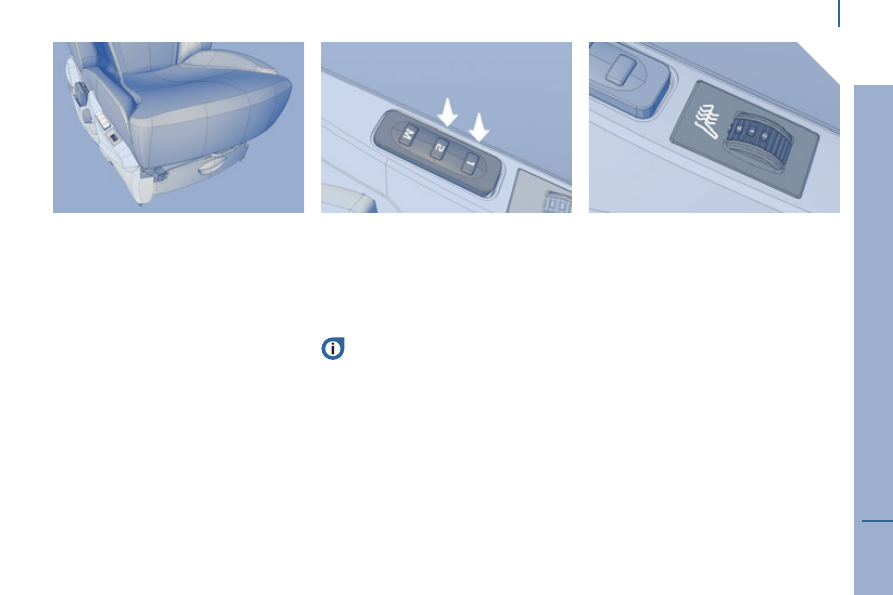Peugeot 807 (2013 year). Instruction - part 5

EASE OF USE and COMFORT
3
63
Seats
Memorising seat positions
Two driving positions can be
memorised, using buttons M/1 and
M/2 .
These are located on the side of the
seat:
- Place the ignition key in the
"running" position (2nd notch),
- Adjust your seat,
- Press button M , then button 1 for
a fi rst driving position within four
seconds.
Repeat the same actions on buttons M
and 2 to store another driving position.
An audible signal confi rms that a
position has been memorised.
Memorising a new position cancels the
previous one.
Activating a memorised driving
position
Front heated seat controls
When the engine is running, the front
seats can be heated separately.
Use the adjustment controls located on
the side of each front seat to switch on
and select the self-regulated level of
heating:
1: Low.
2: Medium.
3: High.
0: Off.
After recalling a memorised
position fi ve times in succession,
the function will be cancelled until
the engine is started.
Engine running
- Keep button 1 or 2 pressed down
until the end of setting of the
corresponding memorised position.
Engine off
- Briefl y press button 1 or 2 to recall
the corresponding memorised
position.